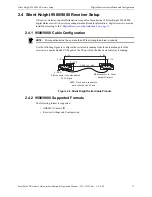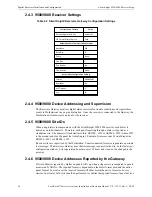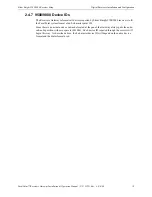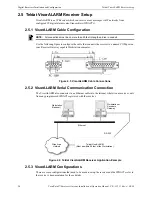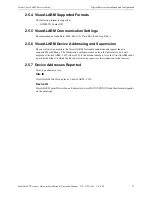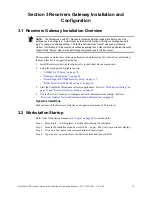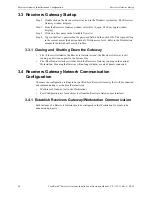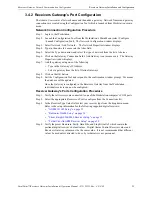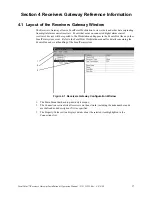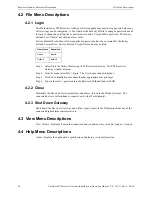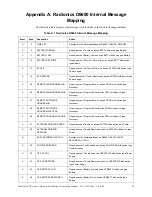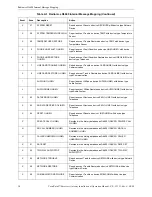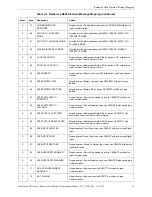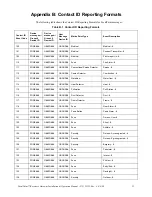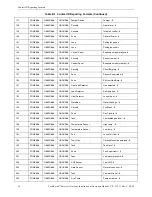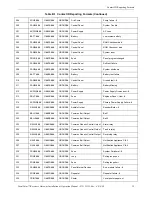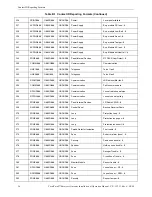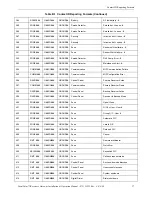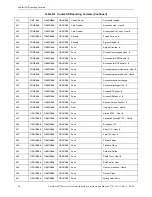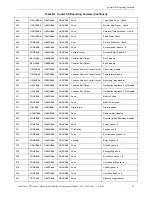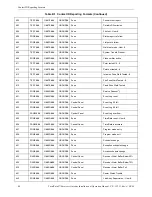
Receivers Gateway Network Communication Configuration
Receivers Gateway Installation and Configuration
25
FocalPoint™ Receivers Gateway Installation & Operation Manual - P/N: 53251:Rev: A 9/8/09
3.4.2 Receivers Gateway’s Port Configuration
The Admin User creates a Network name and then adds a gateway. Network Names and gateway
connections are created using the Configuration Tool which is launched from Workstation’s main
menu
Network Connection Configuration Procedure
Step 1. Login to the Workstation.
Step 2. Launch the Configuration Tool from the Workstation’s Main Menu (select Configure
>Launch Configuration Tool). The Network Configuration window displays.
Step 3. Select Network >Add Network... The Network Properties window displays.
Step 4. Type in the network’s name into the Alias field.
Step 5. Select the Type down arrow and select the type of network from the list of choices.
Step 6. Click on the Gateway Connection field’s Add Gateway icon (mouse over). The Gateway
Properties window displays.
Step 7. Add the gateway using one of the following:
• Type in the Gateway’s IP Address.
• Select a gateway from the list of Online Gateways.
Step 8. Click on the OK button.
Step 9. Exit the Configuration Tool and respond to the confirmation window prompt. Yes means
the database will be updated.
Once the Gateway is configured in the Receivers Gateway from the Workstation,
individual receivers can now be configured.
Receiver Gateway’s Ports Configuration Procedure
Step 1. Verify that all receivers are connected to one of the Workstation computer’s COM ports.
Step 2. Select the appropriate Receiver or Port to configure from the Connections list.
Step 3. In the Receiver Type Value field select your receiver type from the drop down menu.
Refer to the setup information for the following supported digital receivers:
•
“ADEMCO 685 Setup” on page 12
.
•
“Radionics D6600 Setup” on page 14
.
•
“Silent Knight 9500/9800 Receiver Setup” on page 17
.
•
“Teldat VisorALARM Receiver Setup” on page 20
Step 4. Verify the preset Baud rate, Parity, Data Bits, and Stop Bits all of which contain the
pertinent digital receiver’s default values. Digital Alarm Control Receiver values and
Receivers Gateway values must be the same value. It is not recommended that different
values be used unless directed to do so by technical services personnel.







